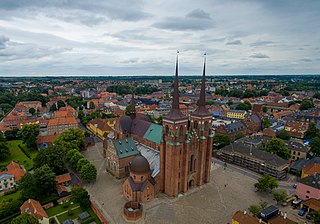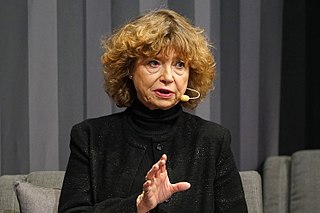
The Baháʼí Faith is a religion founded in the 19th century that teaches the essential worth of all religions and the unity of all people. Established by Baháʼu'lláh, it initially developed in Iran and parts of the Middle East, where it has faced ongoing persecution since its inception. The religion is estimated to have 5 to 8 million adherents, known as Baháʼís, spread throughout most of the world's countries and territories.

Ole Christensen Rømer was a Danish astronomer who, in 1676, made the first measurement of the speed of light.
The Orthodox Baháʼí Faith is an extremely small Baháʼí sect that was formed in 1960 by Mason Remey, and subsequently was the name used by one of his disputed successors, Joel Marangella. The sect is defined by a belief that the Guardianship of Shoghi Effendi (1921–1957) continued with further appointees, whereas the mainstream Baháʼís follow a line of leadership that transitioned to the elected Universal House of Justice in 1963 with no eligible appointees as Guardian.

A Baháʼí House of Worship or Baháʼí temple is a place of worship of the Baháʼí Faith. It is also referred to by the name Mashriqu'l-Adhkár, which is Arabic for "Dawning-place of the remembrance of God". Baháʼí Houses of Worship are open to both Baháʼís and non-Baháʼís for prayer and reflection. All Baháʼí Houses of Worship have a round, nine-sided shape and are surrounded by nine pathways leading outwards and nine gardens. Baháʼí literature envisages Houses of Worship surrounded by a number of dependencies dedicated to social, humanitarian, educational, and scientific pursuits, although no Baháʼí House of Worship has yet been built up to that extent. At present, most Baháʼí devotional meetings occur in individuals' homes or local Baháʼí centres rather than in Baháʼí Houses of Worship.

The Hidden Words is a book written in Baghdad around 1858 by Baháʼu'lláh, the founder of the Baháʼí Faith, while he walked along the banks of the Tigris river during his exile there. The work is written partly in Arabic and partly in Persian.

The Baháʼí Faith is an independent world religion that originated in 19th century Iran, with an emphasis on the spiritual unity of mankind. Although it came from Islamic roots, its teachings on the unity of religion and its acknowledgement of Krishna as a divine Manifestation of God have created a bridge between religious traditions that is accepting of Hinduism.
An Azali or Azali Bábí is a follower of the monotheistic religion of Subh-i-Azal and the Báb. Early followers of the Báb were known as Bábís; however, in the 1860s a split occurred after which the vast majority of Bábís followed Mirza Husayn ʻAli, known as Baháʼu'lláh, and became known as Baháʼís, while the minority who followed Subh-i-Azal, Baháʼu'lláh's half-brother, came to be called as Azalis.
The Baháʼí Faith formed in the late 19th century Middle East and soon gained converts in India, the Western world, and beyond. Traveling promoters of the religion played a significant role in spreading the religion into most countries and territories during the second half of the 20th century, mostly seeded out of North America by means of the planned migration of individuals. The Baháʼí Faith was recognized as having a widespread international membership by the 1980s, and is now recognized as the second-most geographically widespread religion after Christianity.
The Baháʼí Faith is a relatively new religion teaching the essential worth of all religions and the unity of all people.

The Lotus Temple, located in New Delhi, India, is a Baháʼí House of Worship that was dedicated in December 1986. Notable for its lotus-like shape, it has become a prominent attraction in the city. Like all Bahá’í Houses of Worship, the Lotus Temple is open to all, regardless of religion or any other qualification. The building is composed of 27 free-standing marble-clad "petals" arranged in clusters of three to form nine sides, with nine doors opening onto a central hall with a height of slightly over 34 meters and a capacity of 1,300 people. The Lotus Temple has won numerous architectural awards and has been featured in many newspaper and magazine articles.

Christianity is the largest religion in Denmark. In January 2020, 74.4% of the population of Denmark were registered members of the Church of Denmark, the officially established church, which is Protestant in classification and Lutheran in orientation. This is down 0.6% compared to the year earlier and 1.2% down compared to two years earlier. Despite the high membership figures, only 3% of the population regularly attend Sunday services, and only 19% of Danes consider religion to be an important part of their life.

Swami Janakananda Saraswati is a tantric yoga and meditation teacher and a writer, who has had a significant influence in the dissemination of yoga and meditation in Scandinavia and Northern Europe. He is the oldest active sannyasin disciple of Satyananda Saraswati in Europe.
World Christian Encyclopedia is a reference work, with its third edition published by Edinburgh University Press in November 2019. The WCE is known for providing membership statistics for major world religions and Christian denominations including historical data and projections of future populations.
The Baháʼí Faith in Denmark began in 1925, but it was more than 20 years before the Baháʼí community in Denmark began to grow after the arrival of American Baháʼí pioneers in 1946. Following that period of growth, the community established its Baháʼí National Spiritual Assembly in 1962. In 2002, Baháʼí sources indicate about 300 Baháʼís, including both Iranian Baháʼí refugees and Danish converts. The Association of Religion Data Archives estimated some 1,200 Baháʼís in 2005.
Buddhism is a minority religion in Denmark with approximately 64,000 members (1.1%) in 2018.

Bente Christina Brønnum Scavenius is a Danish art historian, art critic and author. She has taught at the University of Copenhagen and Aarhus University, and has written more than 20 books. She has also been a member of numerous public and private committees and boards of directors of cultural institutions in Denmark.
A bibliography of books and material related to the Architecture of Denmark:

Cynthia M. Grund is an American philosopher and educator who as of August 2016 is Associate Professor of Philosophy at the University of Southern Denmark where she is also Research Director for The Aesthetics of Music and Sound project.
Nina Grønnum is a Danish retired phonetician and associate professor emeritus from the University of Copenhagen. She is best known for her work on the pronunciation of Danish and especially her many studies on Danish intonation and prosody. She went by her married name Nina Thorsen or Nina Grønnum Thorsen until the 1980s.
Eva Skafte Jensen is a Danish linguist and researcher at the Danish Language Council.










